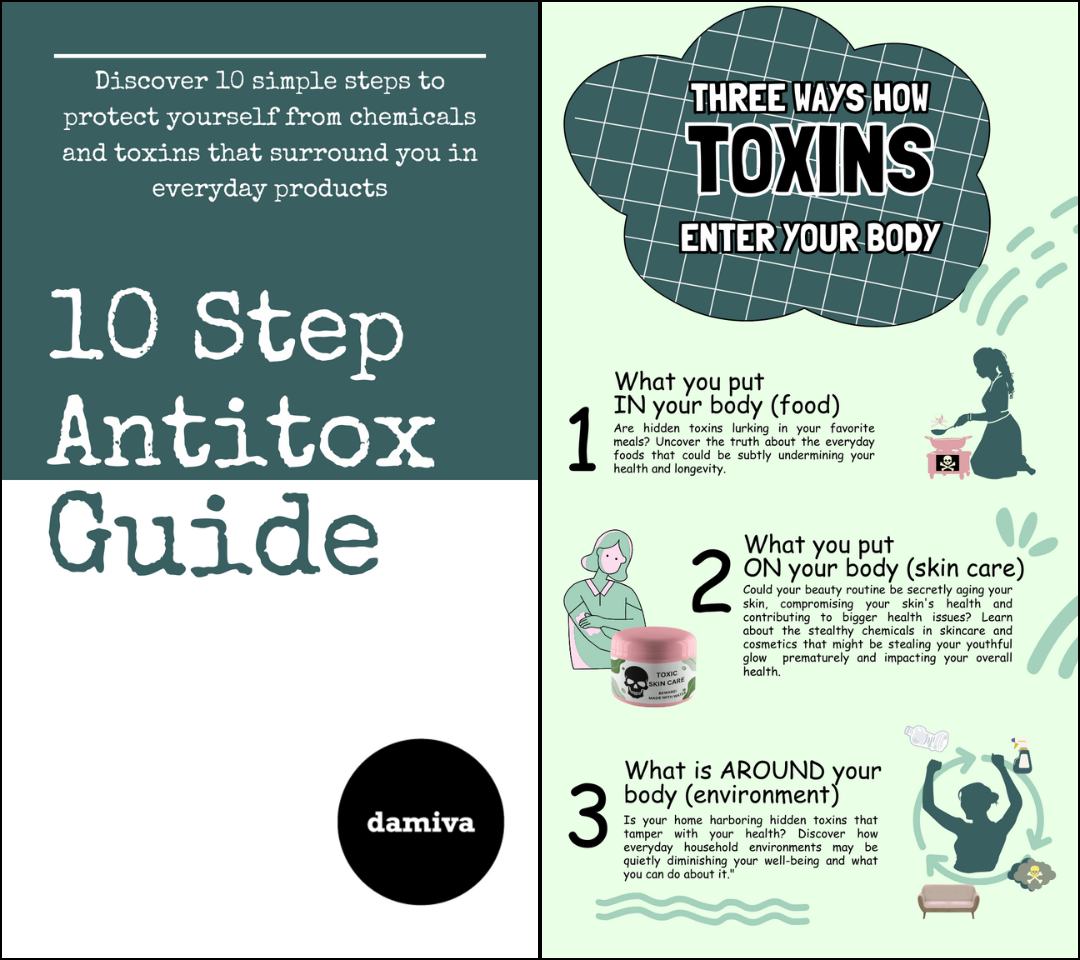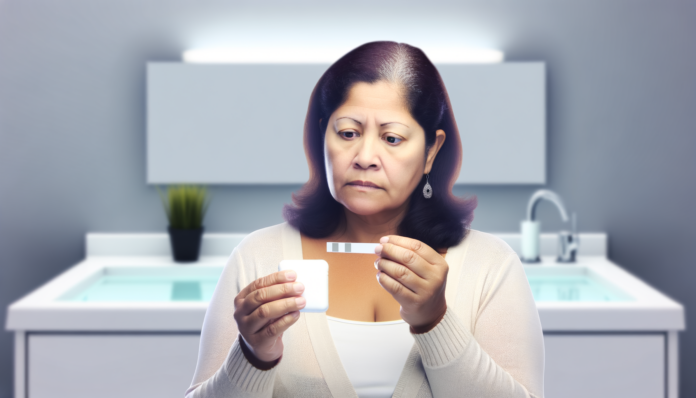Introduction to Vaginal pH Balance
Understanding Vaginal pH
Your vaginal pH is a key indicator of your overall vaginal health. The pH scale measures how acidic or alkaline a substance is, ranging from 0 to 14, with 7 being neutral. A pH of less than 7 is considered acidic, while a pH of more than 7 is basic. A healthy vaginal pH is typically between 3.8 and 4.2, which is moderately acidic. This acidity is crucial for maintaining a balanced vaginal microbiome, dominated by beneficial bacteria known as Lactobacilli. These bacteria produce lactic acid, which helps to keep the vaginal environment acidic and protect against infections.
Importance of pH Balance
Maintaining the right pH balance in your vagina is essential for several reasons. An acidic vaginal environment acts as a barrier, preventing unhealthy bacteria and yeast from multiplying too quickly. Disrupting this natural acidity can lead to discomfort and infections. For instance, bacterial vaginosis (BV) can develop when the vaginal pH becomes too alkaline, leading to an overgrowth of certain bacteria. BV is the most common vaginal infection in the United States and can increase the risk of more serious infections. On the other hand, yeast infections, which are the second most common vaginal infection, can cause the vaginal pH to become too acidic. While an acidic environment generally doesn’t increase the risk of infection, it can affect fertility by making it difficult for sperm to survive and reach the egg.
Natural Shifts During Life Stages
It’s important to note that what constitutes a “normal” vaginal pH can vary slightly based on your stage of life. During your reproductive years (ages 15–49), a healthy vaginal pH should be below or equal to 4.5. However, before menstruation and after menopause, a healthy pH tends to be higher than 4.5. These natural shifts are influenced by hormonal changes that occur during different life stages. For example, menstrual blood is slightly alkaline, which can temporarily raise the vaginal pH. Similarly, hormonal fluctuations during pregnancy, breastfeeding, and menopause can also affect vaginal pH levels. Understanding these natural shifts can help you better monitor and maintain your vaginal health throughout different stages of life.
Causes of Vaginal pH Imbalance
Hormonal Changes
Hormonal fluctuations are a significant factor in altering vaginal pH levels. During different life stages such as puberty, menstruation, pregnancy, and menopause, hormonal changes can impact the acidity of the vagina. For instance, estrogen levels influence the production of glycogen, which in turn affects the growth of lactobacilli, the beneficial bacteria that help maintain an acidic environment. During menstruation, the presence of menstrual blood, which is slightly alkaline, can temporarily raise the vaginal pH. Similarly, hormonal contraceptives and hormone replacement therapies can also affect vaginal pH, sometimes leading to imbalances.
Bacterial Imbalance
A healthy vagina is home to a variety of bacteria, predominantly lactobacilli, which help maintain an acidic pH. However, an overgrowth of harmful bacteria can disrupt this balance, leading to conditions such as bacterial vaginosis (BV). BV is characterized by a decrease in lactobacilli and an increase in anaerobic bacteria, which raises the vaginal pH and creates a more alkaline environment. This imbalance can result in symptoms like a fishy odor, increased discharge, and discomfort. Factors contributing to bacterial imbalance include antibiotic use, which can kill both harmful and beneficial bacteria, and sexual activity, which can introduce new bacteria into the vaginal environment.
Fungal Infections
Fungal infections, particularly yeast infections caused by Candida species, can also disrupt vaginal pH. Unlike bacterial vaginosis, yeast infections typically make the vaginal environment more acidic. Symptoms of a yeast infection include thick, white discharge, itching, and irritation. Factors that can promote fungal overgrowth include a weakened immune system, high sugar diets, and the use of antibiotics, which can disrupt the natural balance of bacteria and fungi in the vagina. Managing these infections often involves antifungal treatments and lifestyle changes to restore balance.
Sexually Transmitted Infections
Sexually transmitted infections (STIs) such as trichomoniasis, chlamydia, and gonorrhea can significantly alter vaginal pH. Trichomoniasis, for example, is caused by a protozoan parasite that thrives in a more alkaline environment, leading to an increase in vaginal pH. Symptoms of STIs can vary but often include unusual discharge, odor, itching, and discomfort. The presence of an STI not only disrupts the natural pH balance but also increases the risk of other infections and complications. Safe sexual practices, regular STI screenings, and prompt treatment are essential for maintaining vaginal health and pH balance.
Symptoms of pH Imbalance
Recognizing the symptoms of a vaginal pH imbalance is crucial for maintaining overall vaginal health. Here are some common signs that your pH levels might be off:
Changes in Vaginal Discharge
One of the most noticeable symptoms of a pH imbalance is a change in vaginal discharge. Normally, vaginal discharge is clear or milky white and has a mild odor. However, when the pH balance is disrupted, you may observe:
- Increased discharge: A sudden uptick in the amount of discharge can be a sign of an imbalance.
- Color changes: Discharge may turn gray, green, or yellow, indicating a possible infection.
- Texture changes: Discharge may become thicker or more watery than usual. For instance, a thick, white discharge resembling cottage cheese is often associated with yeast infections.
Odor Variations
Another common symptom of a pH imbalance is a change in vaginal odor. A healthy vagina typically has a mild, slightly musky scent. However, when the pH is off, you might notice:
- Fishy odor: A strong, fishy smell is often a sign of bacterial vaginosis (BV).
- Foul odor: Any persistent, unpleasant odor that doesn’t go away after washing can indicate an imbalance.
These odor changes are usually more noticeable after sexual intercourse or during menstruation.
Itching and Irritation
Itching and irritation in the vaginal area can be uncomfortable and are often signs of a pH imbalance. This can manifest as:
- Persistent itching: Constant itching around the vulva and vagina can indicate an imbalance, often due to a yeast infection or BV.
- Redness and swelling: The affected area may appear red and swollen, adding to the discomfort.
These symptoms can be exacerbated by tight clothing, scented products, or prolonged moisture exposure.
Pain and Discomfort
Pain and discomfort are also indicators that your vaginal pH might be off. This can include:
- Pain during intercourse: Discomfort or pain during sex can be a sign of an imbalance, often due to dryness or an infection.
- Burning sensation: A burning feeling, especially during urination, can indicate an infection or irritation caused by an imbalanced pH.
If you experience any of these symptoms, it’s important to monitor them closely and consider consulting a healthcare provider for a proper diagnosis and treatment plan.
Diagnosing Vaginal pH Imbalance
At-Home Testing Kits
Diagnosing a vaginal pH imbalance can often start with an at-home testing kit. These kits are readily available at most drugstores and online. They typically include pH test strips and a color chart. To use the kit, you briefly press the pH strip against the wall of your vagina. The strip will change color based on your vaginal pH level. You then compare the color of the strip to the provided chart to determine your pH level. At-home testing kits are convenient and can give you a quick snapshot of your vaginal pH. However, it’s important to note that these tests do not diagnose specific infections. They simply indicate whether your pH is within the normal range, which is typically between 3.8 and 4.5. If your pH is outside this range, it may suggest an imbalance that could be due to various factors, including infections or hormonal changes.
Interpreting Test Results
Once you have your test results, interpreting them correctly is crucial. A pH level between 3.8 and 4.5 is considered normal for most women of reproductive age. If your pH is higher than 4.5, it may indicate an overgrowth of harmful bacteria, often associated with bacterial vaginosis (BV). Conversely, a pH lower than 3.8 could suggest a yeast infection, as yeast thrives in more acidic environments. Here are some general guidelines for interpreting your results:
- pH 3.8-4.5: Normal range, indicating a healthy vaginal environment.
- pH above 4.5: May indicate bacterial vaginosis or other bacterial infections.
- pH below 3.8: Could suggest a yeast infection.
While these guidelines can help you understand your pH levels, they are not definitive diagnoses. If your pH is outside the normal range, it’s advisable to consult a healthcare provider for a more comprehensive evaluation.
When to Consult a Healthcare Provider
While at-home testing kits can be useful, there are times when consulting a healthcare provider is essential. If you experience persistent symptoms such as itching, burning, unusual discharge, or a strong odor, it’s important to seek medical advice. These symptoms could indicate an infection that requires professional treatment. Additionally, if your at-home test results show a pH imbalance and you are unsure of the cause, a healthcare provider can perform more specific tests to diagnose the issue. They may take a sample of vaginal discharge for laboratory analysis to identify the exact type of infection or imbalance. In summary, while at-home testing kits are a convenient first step in diagnosing a vaginal pH imbalance, they should not replace professional medical advice. If you have persistent or severe symptoms, or if your test results are abnormal, consulting a healthcare provider is crucial for accurate diagnosis and appropriate treatment.
Managing and Preventing Vaginal pH Imbalance
Avoiding Douching and Scented Products
Douching and using scented products can significantly disrupt the natural pH balance of your vagina. **Douching** involves squirting a liquid mixture into the vagina, which can wash away the beneficial bacteria that help maintain an acidic environment. This can lead to an overgrowth of harmful bacteria and increase the risk of infections like bacterial vaginosis (BV). Similarly, **scented products** such as sprays, wipes, and scented tampons can introduce chemicals that irritate the vaginal lining and alter its pH. Instead, opt for unscented, hypoallergenic products and clean the external genital area with warm water and mild, fragrance-free soap.
Using Probiotics
Probiotics are beneficial bacteria that can help maintain a healthy vaginal pH by promoting the growth of **Lactobacilli**, the bacteria responsible for producing lactic acid and keeping the vagina acidic. You can incorporate probiotics into your diet through fermented foods like yogurt, kefir, sauerkraut, and kimchi.
Applying Vaginal Moisturizers
Vaginal dryness can disrupt the pH balance and lead to discomfort and irritation. **All-natural, pH balanced vaginal moisturizers that do NOT contain synthetic chemicals** can help maintain the natural moisture and acidity of the vagina. These products are different from lubricants used during sexual activity; they are designed for regular use to keep the vaginal tissues hydrated. Look for moisturizers that are pH-balanced and free from chemicals and beeswax. Regular use can help maintain a healthy vaginal environment and prevent pH imbalances.
Maintaining General Vaginal Hygiene
Good vaginal hygiene practices are essential for maintaining a healthy pH balance. Here are some tips to follow:
- Wear breathable underwear: Choose cotton underwear and avoid tight-fitting clothes to allow air circulation and reduce moisture buildup.
- Change tampons and pads regularly: During menstruation, change tampons and pads every 4 to 8 hours to prevent bacterial growth and maintain a healthy pH.
- Practice safe sex: Use condoms to reduce the risk of sexually transmitted infections (STIs) and prevent semen, which is alkaline, from disrupting the vaginal pH.
- Stay hydrated: Drinking plenty of water helps maintain overall health, including vaginal health.
- Wipe from front to back: This prevents the spread of bacteria from the anus to the vagina, reducing the risk of infections.
By following these guidelines, you can help maintain a healthy vaginal pH balance and reduce the risk of infections and discomfort. Regular monitoring and adopting these preventive measures can go a long way in ensuring optimal vaginal health.

Popular Read
When to Seek Medical Advice
Understanding when to seek medical advice for a potential vaginal pH imbalance is crucial for maintaining overall vaginal health. While some symptoms can be managed at home, others require professional medical intervention. Here are key scenarios where consulting a healthcare provider is essential:
Persistent Symptoms
If you experience symptoms of a vaginal pH imbalance that persist despite home remedies and lifestyle changes, it is time to consult a healthcare provider. Persistent symptoms may include:
- Unusual vaginal discharge that does not resolve
- Persistent vaginal odor, especially if it is fishy or foul
- Ongoing itching or irritation
- Continuous burning sensation during urination or intercourse
These symptoms could indicate an underlying condition such as bacterial vaginosis (BV) or a yeast infection that requires medical treatment. Ignoring persistent symptoms can lead to more severe complications, so timely medical advice is crucial.
Severe Discomfort
Experiencing severe discomfort in the vaginal area is another clear sign that you should seek medical advice. Severe discomfort can manifest as:
- Intense itching or burning
- Significant pain during intercourse
- Severe swelling or redness around the vaginal area
Such symptoms can be indicative of more serious infections or conditions that need prompt medical attention. Severe discomfort is not something to be taken lightly, as it can significantly impact your quality of life and overall health.
Recurring Infections
If you find yourself dealing with recurring infections, such as frequent bouts of BV, yeast infections, or urinary tract infections (UTIs), it is essential to consult a healthcare provider. Recurring infections can be a sign of an underlying issue that needs to be addressed. Your healthcare provider can help identify the root cause and recommend a treatment plan to prevent future occurrences.
Recurring infections can also lead to more serious health issues if left untreated, including pelvic inflammatory disease (PID) and increased risk of sexually transmitted infections (STIs). Therefore, seeking medical advice for recurring infections is vital for long-term vaginal health.
In summary, while some symptoms of vaginal pH imbalance can be managed at home, persistent symptoms, severe discomfort, and recurring infections are clear indicators that you should seek medical advice. Timely consultation with a healthcare provider can help diagnose the underlying cause and provide appropriate treatment, ensuring your vaginal health is maintained.
Do you know the 3 main ways how your body is exposed to harmful chemicals, which affect your hormones, your thyroid, health and beauty?
If not, it may be time to learn about them. It takes about 1-2 minutes.
We have a few suggestions how to avoid these silent health and immune system killers in our new guide.

Conclusion
Summary of Key Points
Maintaining a healthy vaginal pH balance is crucial for overall vaginal health. A normal vaginal pH ranges between 3.8 and 4.5, which is slightly acidic and helps protect against infections. Various factors can disrupt this balance, including hormonal changes, bacterial and fungal infections, sexually transmitted infections, and lifestyle choices such as douching and using scented products. Symptoms of an imbalance can include changes in vaginal discharge, odor variations, itching, irritation, and discomfort. Diagnosing a pH imbalance can be done through at-home testing kits or by consulting a healthcare provider. Managing and preventing imbalances involves avoiding douching, using probiotics, applying vaginal moisturizers, and maintaining general vaginal hygiene.
Encouragement to Monitor Vaginal Health
It’s essential to be proactive about your vaginal health. Regularly monitoring your vaginal pH can help you catch imbalances early and take corrective measures before they lead to more severe issues. Simple lifestyle changes, such as avoiding scented products and douching, wearing breathable cotton underwear, and taking probiotics, can make a significant difference. Additionally, paying attention to your body’s signals—like changes in discharge, odor, or discomfort—can alert you to potential problems. Remember, your vagina is a self-cleaning organ, and maintaining its natural balance is key to preventing infections and other complications.
Final Thoughts
Understanding and maintaining your vaginal pH balance is a vital aspect of women’s health. While it may seem daunting, the steps to ensure a healthy pH balance are straightforward and manageable. By incorporating good hygiene practices, making informed lifestyle choices, and seeking medical advice when necessary, you can maintain a healthy vaginal environment. Regular check-ups with your healthcare provider can also help you stay informed and address any concerns promptly. Ultimately, taking charge of your vaginal health empowers you to lead a more comfortable and confident life.












